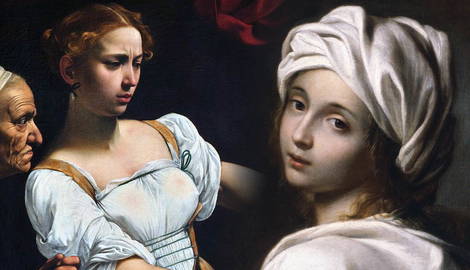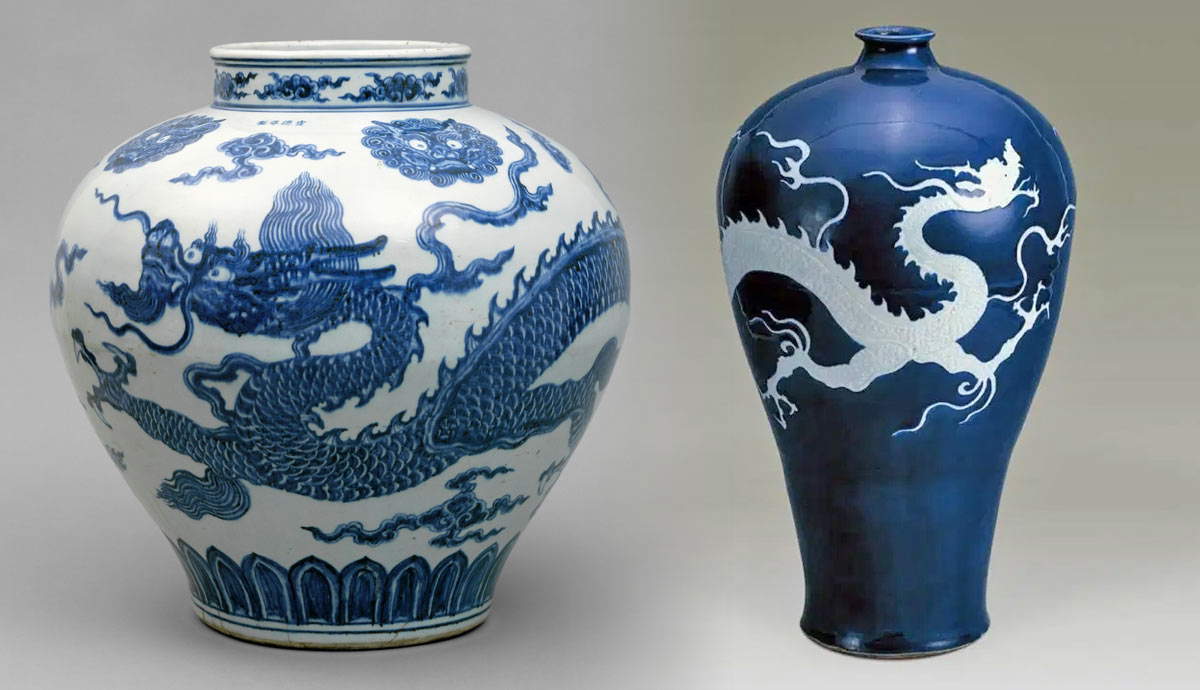
Caravaggio’s depiction of Judith is unlike many of his contemporaries’ depictions of her. Could Caravaggio have known a real-life Judith to inspire him in 16th-century Rome?
The Biblical Judith

Judith was a woman described in the Bible as a savior for her village and people. The Book of Judith states that she came from a long line of royals and was a young widow. Judith is described as beautiful and virtuous. She resided in the village of Bethulia, which had been besieged by an Assyrian general named Holofernes and his army. Wanting to save her village but not knowing how, Judith prayed to God for guidance.
God answered her prayers with a plan that Judith would have to carry out alone. Well, almost alone—Judith brought along her trusty handmaid, Abra. The two women left their village, assuring the citizens that they followed God’s instructions for their safety. The villagers wished for their success as Judith and Abra set out. When they made it to the Assyrian camp, Judith persuaded the guards that she was there with information that would betray her village and help the Assyrians. This, along with Judith’s beauty and charm, was enough to grant them safe entry into the army camp.
Once inside, Judith and her maid were presented to the general, Holofernes. Overtaken by Judith’s beauty, Holofernes invited the two women to stay the night and dine with him. Throughout the meal Holofernes drank wine, offering some to Judith who took a glass graciously. While Judith drank the wine slowly, Holofernes continued to drink excessively throughout the meal, so much so that Judith needed to help the general to his tent. Holofernes was under the assumption that he and Judith would sleep together that night, but after drinking so much wine, he collapsed on the bed in a drunken state.

After checking to ensure Holofernes was genuinely asleep, Judith found her maid and had her come into the tent with her. Once the two women were together standing over Holofernes’s drunken body, Judith lifted her sword and brought it down forcefully on Holofernes’s neck, slicing his head clean off. The two women then quickly placed the general’s head inside their satchel and ran out of the Assyrian camp and back to their village of Bethulia. Once the citizens saw Judith and the head of Holofernes, they shouted for joy and thanked God and Judith for ridding them of the Assyrian threat. Judith was seen as a symbol of good and of truth superseding evil.
Caravaggio’s Judith

Caravaggio’s Judith is unlike many contemporary depictions of the event; Judith does not display relish in her actions but is hesitant about them. Her face is twisted in an appalled expression at what is happening in front of her, even if she is the one acting. Judith’s face is young, bright, and flushed with a pink-red hue, highlighting her youth and inexperience. Her furrowed brows could be the result of the amount of strength it takes to decapitate a man, or it could be due to Holofernes screaming in pain, staring back at her. There could be many causes, but what is clear is that Judith is uncertain about her actions.
Judith’s facial expressions are in direct contrast with her handmaid, Abra’s. In Caravaggio’s painting, Abra is not a young woman like Judith but an elderly woman whose hunched back and wrinkles display an eager, impatient individual. Abra is determined, grasping the bag to hold Holofernes’s head. She looks at the general with no compassion for what is happening. The stark contrast between young and old and determination and hesitation heightens the dramatic scene.
Caravaggio depicted Judith much like he depicted many of his other subjects: a real-life soul with responsibilities, fears, and flaws, yet instilled with a righteous sense of determination. The young widow’s elegant attire and youthful beauty stand in contrast to the brutality of her actions. As is usual with Caravaggio’s work, this painting is set against an undefined background; all the focus is meant to be on the action. The lack of background only heightens the psychological impact and ensures the figures of the work stand out vividly.
Possible Inspiration for Judith

Just before Caravaggio painted Judith Beheading Holofernes, there had been a very public trial and beheading of a young woman on the bridge of Castel Sant’Angelo in Rome. Caravaggio himself may have been in the large crowd witnessing the beheading. The young woman was Beatrice Cenci, a young noblewoman. In 1598, Beatrice, her stepmother, and two brothers devised a plot to kill their father/husband, Count Francesco Cenci.
Why did the family plot to kill the patriarch? Count Francesco Cenci might have appeared outwardly as an upstanding nobleman. Still, those who knew him better knew that he was an oppressive bully who repeatedly sexually assaulted his daughter, Beatrice, and terrorized the rest of his family through physical assault.
After years of enduring his relentless cruelty and abuse, Count Cenci’s family could no longer tolerate his tyrannical reign over them. Desperate to escape his brutality, they devised a calculated plan to end his life. With the assistance of two loyal vassals who had also suffered under the count’s oppressive rule, the family set their scheme into motion. They first drugged Count Cenci, ensuring that he was rendered unconscious and defenseless.
Once he was completely incapacitated, Beatrice, driven by years of suffering and a desperate need for justice, took matters into her own hands. With her stepmother and siblings, she carried out the gruesome act—striking him repeatedly with a hammer until his body was lifeless. To cover up the murder and make it appear as though his death was an accident, they carefully positioned his corpse and hurled it from a balcony, hoping that authorities would believe he had fallen to his demise.

Soon after Count Cenci’s death, his sudden and unexplained absence raised suspicion among those who knew him. The papal police launched an investigation, determined to uncover the truth behind Count Cenci’s demise. Under mounting scrutiny, evidence pointed toward his own family as the culprits. Eventually, Beatrice, her stepmother, and her siblings were arrested and put on trial for the murder.
Despite their claims of self-defense and the horrific abuse they had endured at the hands of Count Cenci, the court found them guilty of patricide—a crime considered particularly heinous in the eyes of both the Church and the law. They were sentenced to death, a decision that sent shockwaves through Rome.
The case had drawn widespread attention, and the people of the city, well aware of the count’s monstrous cruelty, sympathized with Beatrice and her family. Many believed that they had acted out of desperation rather than malice. Protests erupted across Rome, with common citizens pleading for mercy and demanding that the execution be halted.
Despite the public outcry, the authorities remained unmoved. At the break of dawn, Beatrice and her stepmother were led to their execution site—just outside the imposing Castel Sant’Angelo, where justice was often carried out in a brutal fashion. As the first rays of sunlight illuminated the ancient bridge, the two women were beheaded before a grieving crowd. Beatrice, whose tragic story would later become legendary, met her fate with quiet dignity, forever cementing her place in history as both a victim and a symbol of defiance against oppression.
Beatrice, Judith, and Caravaggio

Some of Caravaggio’s early biographers state that he may have been among the audience who came to see Beatrice beheaded on September 11th, 1599. Caravaggio’s presence at Beatrice’s execution could have inspired his depiction of Judith in Judith Beheading Holofernes. Beatrice may have served as an example of an empowered female adversary who had decided to take matters into her own hands.
If Caravaggio had been inspired by the trial and death of Beatrice, in his depiction of Judith, he not only transformed Judith but Beatrice as well, from a passive sexualized object who is merely there for male entertainment, into a virtuous warrior. Caravaggio was known to take his subjects from real life, people he met on the streets of Rome. It could, therefore, be suggested that Beatrice was the inspiration for the model of Judith.
Could Caravaggio have been thinking of how Beatrice felt during the murder? A frightened young woman who unwillingly murders to save her family and people? In this respect, Beatrice’s actions were linked to Judith’s as both attempted to save those around them instead of themselves—a selfless act. Both women risked death to bring safety to their surroundings and loved ones. The youthful face of Judith radiates confusion and inexperience, possibly the same expressions of struggle and trepidation that Beatrice felt during her act of murder. This eternal struggle in Caravaggio’s painting connects Judith with Beatrice’s case as both young women defeated an older, more powerful man.

In the eyes of Caravaggio, Beatrice could have embodied the essence of a real-life female warrior, starkly contrasting with the archetypal female biblical heroes of yesteryears. Instead of merely depicting long-gone figures from ancient texts, he might have drawn inspiration from her as a living, breathing testament to courage and resilience.
With the tragic inevitability of her execution looming over her, there was a poignant possibility that Caravaggio would choose to immortalize Beatrice’s youthful, innocent, and pure visage through the lens of another selfless young woman—a symbol of hope in times of despair. In his artwork, Caravaggio masterfully intertwined the ideals of biblical virtue with the visceral realities of a 16th-century world, creating a powerful narrative that transcended mere historical representation. Through his brush, he could elevate Beatrice’s story and legacy, capturing the profound struggle and strength of women in an age often overshadowed by patriarchal narratives.









